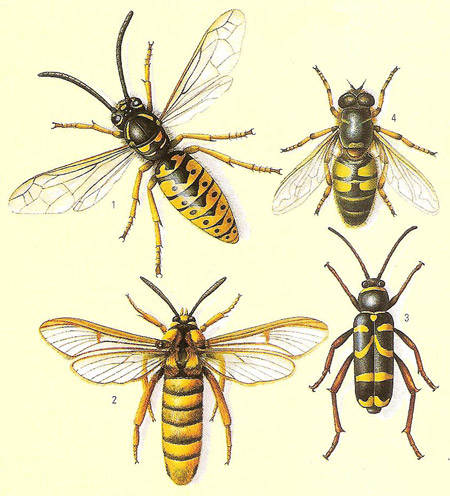視覺訊號凸顯度的差異可能推動不完美擬態的演化
 |
| photo: Encyclopedia of Science |
摘要
日前介紹過一篇較為近期的文章:捕食者對視覺訊號的差異的內在排序與其對擬態演化的影響,以人類視覺測試相似的訊號下,是不是有某些特定的部分容易被分辨,某些總是被忽略。而這篇研究就是前傳,就是因為發現這個現象好像有點難解釋,因此才用人類的視覺重新測試一次。
擬態的各種理論與證據一直提醒我們,如果某個物種的斑紋有差異,就會很快的被天擇篩選掉,到最後擬態模型與擬態者間的斑紋就會越來越像,也就是說,擬態這件事情理論上很難容忍不完美的斑紋,就算要不像也會有個限度。
還是那一句,事情永遠不會是我們想得那麼簡單。我們就是會看見像食蚜蠅(hoverfly)這種有很像也有很不像的類群,看起來像什麼但實際上什麼也不像的,我們就稱為不完美擬態(imperfect mimicry)。很多的研究討論過不完美擬態,無論是從演化,或是從行為,都有證據支持這種程度的不像已經足以提供某種程度的保護,但是仔細一想,這些雖然是不完美擬態,卻總是分享某些相似的視覺訊號,以食蚜蠅為例,至少腹部的黑黃條紋會讓人聯想到某些蜂,如果是這樣的話,有個假說就產生了:捕食者會不會就是只認某些斑紋,其他地方長怎樣就不管了,因此自然界中才會有看起來很不像的擬態者?
 |
| Fig. 1 實驗中設計的有報酬與沒報酬的人工符號 |
 |
| Fig. S1 實際上進行的實驗設計 |
作者群基於這個想法,以藍山雀 (Cyanistes caeruleus) 做為捕食者,設計如上圖的符號,包含三個主要素:形狀、顏色、符號,進行實驗時給牠看有報酬(mimic)與沒報酬(model)的訊號,第二次進行試驗時分別以三個要素測試,看藍山雀會比較避免取食符合哪個要素的人工餌料。簡單的說,預期的結果是如果捕食者看整體,那麼完美擬態的應該被留下最多,如果只看顏色,那麼與沒報酬(model)的應該被留下最多,顏色、符號也是相同的道理。
) |
| 實驗中使用的捕食者藍山雀 (Cyanistes caeruleus) photo: rspb |
結果發現與model相同顏色的mimic被避免的趨勢是相似的,符號與形狀似乎沒那麼大的影響力(近期的那篇文章也有相似的結果)。從這個實驗來看,顏色的影響力是大於其他的因素,我們可以推測捕食者在面對擬態的物種時,有可能只關注某個部分,而這個部分所產生的印象足以掩蓋其他不精確的訊號,因此造成不完美擬態的現象。
這個想法當然十分有趣,但是,如果不太完美也可以的話,那麼為何大部分的擬態需要如此精確?那些用藍山雀來測試完美擬態的實驗,會不會也只認得了一部分?那些結果是否需要重新詮釋?或是以單一的捕食者模型來測試所有的擬態現象本身就是個值得探討修正的要素?





0 comments